Factoring out the GCF
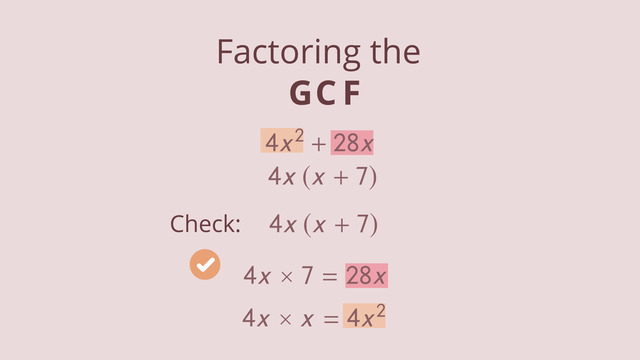

Basics on the topic Factoring out the GCF
To make polynomials easier to work with, factor out the greatest common factor of each term in the polynomial. The GCF may be obvious or more difficult to determine. If the GCF doesn’t jump out at you, you can always factor each term and hunt for the common factors.
Once you find the GCF, what do you do with it? Good question. To answer that question, we must consider the Distributive Property: a(b + c) = ab + ac. See how the a is outside the parentheses and b + c are inside? When you factor out the GCF of a polynomial, put the GCF outside the parentheses and what’s left of the polynomial, inside the parentheses. Doing this is the reverse of the Distributive Property.
To check your work, go the other direction and distribute the GCF across the terms inside the parentheses. Factoring out the GCF of a polynomial by using the reverse of the Distributive Property, will make it easier to calculate the zeros of the polynomial which is also the answer. Finding the zeros of complicated polynomials can be tricky, and you’ll want to learn every trick or tip in the book, so watch this video to get a head start on complicated algebra problems.
Understand the relationship between zeros and factors of polynomials.
CCSS.MATH.CONTENT.HSA.APR.B.2
Transcript Factoring out the GCF
Meet Gi Na. She loves to play her flute outside in the fresh air, close to nature. Gi Na's friend, Chaika, loves to do Ollies on her skateboard at the city skate park. Whoa, look at her go! This is Fernando. He likes to hang out in his room with his Chameleon, Oscar. These three friends have three VERY different interests.
GCF in everyday life
But, Gi Na likes to do lots of other things too. She likes crossword puzzles, glass blowing, painting, origami, karaoke, jewelry making, do-it-yourself projects, Sudoku, sewing, knitting. It’s a long list, you get the picture. In addition to skateboarding, Chaika likes photography, music, snowboarding, snake boarding, watching movies and tv, metal working, graffiti, hip hop and karaoke. Another long list of interests.
Fernando also likes drawing, acting, doing Sudoku puzzles, collecting insects, roasting coffee, arranging flowers, singing Karaoke, cheerleading, and making movies. The three friends want to do something together, but something they ALL enjoy, an interest that’s common to all three. How can we figure this out? It's like finding the Greatest Common Factor, or GCF for short.
The Greatest Common Factor in math
We can relate this real world problem to a math topic, finding the Greatest Common Factor. To make polynomials easier to work with, we factor out the Greatest Common Factor and to do this, we undo the Distributive Property. You can also think of it as the reverse of the Distributive Property.
First example
Let’s take a look at an example. 4x + 28. 4 is common to both terms, so by undoing or reversing the Distributive Property, we factor out the 4. Notice how I write this down, outside parentheses is the GCF, and inside parentheses is what's left of the expression after dividing all terms by the GCF.
Second example
Let’s try a second example, 4x² + 28x. You can write this as (4)(x)(x) + (4)(7)(x) Hmm, both terms have a common factor of 4 and they both have an 'x' so we can factor out 4 and also an 'x' and in a reverse of the Distributive Property, we display the GCF, 4x, outside the parentheses and what's left of the expression inside by dividing all terms by the GCF.
Last check
Don't forget: to check your work, you can apply the Distributive Property. Looking good! Sometimes math teachers like to assign problems that look impossible to solve, but if you know the right steps, they're not that bad. Let’s try one of those now.
Oh boy, it’s a doozey, 10x³y² + 18x²y - 4x. (2 * 5) (x * x * x) (y * y) + (2 * 3 * 3) (x * x) * y - (2 * 2) (x) 2x is the GCF. So let's factor it out. Okay, what's the result 2x times the trinomial 5x²y² + 9xy + 2. Wow, that was a lot of work! Do you need to completely factor every term, everytime? No, probably most of the time, you can figure it out without writing out all the factors.
Summary
Okay, let's summarize. To find the Greatest Common Factor of a polynomial, find the factors common to each term in the polynomial. Back to our three friends. Did they figure out something they all like to do? Li Na and Leon like Sudoko, but Ayumi is not a fan, so that's not the GCF or the common interest for all three. But… they all like Karaoke! It’s their GCF! But sadly, their taste in music is not a GCF.
Factoring out the GCF exercise
-
Describe the greatest common factor (GCF).
HintsTo determine the GCF, let's look at an example:
$6 = 2 \times 3$ and $8 = 2 \times 2 \times 2$
Both numbers, $6$ and $8$, have the factor $2$ in common, so $2$ is the GCF.
Now let's take a look at another example:
$12 = 2 \times 2 \times 3$ and $8 = 2 \times 2 \times 2$
As you can see, both numbers have the factor 2 listed twice. So the GCF is $2 \times 2 = 4$.
SolutionWow, Gi Na, Chiako, and Fernando have a lot of hobbies. They decide to spend time together and want to do an activity they all enjoy - a common interest.
The common interest in this example corresponds to the Greatest Common Factor - GCF.
Let's have a look at the list to the right:
- Gi Na and Fernando love Sudoku puzzles, but Chiako doesn't care for them.
- However, we can see that everyone likes karaoke.
Mathematically the GCF is defined as follows:
To find the greatest common factor of a polynomial, find the factors common to each term in the polynomial.
-
Determine the greatest common factor.
HintsYou can check the results by using the Distributive Property.
Look at the following example:
- $6x^2y=(2 \times 3)(x \times x)(y)$
- $8xy^2 = (2 \times 2 \times 2)(x)(y \times y)$
Therefore, the GCF is $2xy$.
To factor a polynomial, write the polynomial as a product where one factor is the GCF, and the other factor is a polynomial listing all the remaining terms.
For example:
$6x^2y - 8xy^2 = (2 \times 3)(x \times x)(y) - (2 \times 2\times 2)(x)(y \times y) = 2xy(3x - 4y)$.
As you can see, both terms have the factors $2$, $x$, and $y$ in common. So the greatest common factor of both terms is $2xy$.
Factoring out $2xy$ from $6x^2y$ leaves $3x$. And factoring out $2xy$ from $-8xy^2$ leaves $-4y$. Therefore, the remaining terms comprises the polynomial $3x - 4y$.
Solution$10x^3y^2 + 18x^2y - 4x$
Oh boy, what a funky polynomial.
To factor out the GCF:
We write each term as a product:
- $10x^3y^2 = (2 \times 5)( x \times x \times x)(y \times y)$
- $18x^2y = (2 \times 3 \times 3)(x \times x)(y)$
- $4x = (2 \times 2)(x)$
Now we factor out the GCF to get:
$10x^3y^2 + 18x^2y - 4x = 2x(5x^2y^2 + 9xy - 2)$
You can check your solution using the Distributive Property. To do this, multiply $2x$ by each term listed inside the parentheses.
-
Find the greatest common factor.
HintsYou don't have to determine the sum of the fruits.
Determine the common factor for each type of fruit.
SolutionFirst, consider how many of each fruit the friends brought for the camping trip.
Apples
- $4$ apples from Gi Na
- $2$ apples from Chiako
- $2$ apples from Fernando
$2$ apples is our greatest common factor.
Bananas
- $2$ bananas from Gi Na
- $4$ bananas from Chiako
- $6$ bananas from Fernando
- $2 = 2 \times 1$
- $4 = 2 \times 2$
- $6 = 2 \times 3$
Kiwis
- $1$ kiwi from Gi Na
- $2$ kiwis from Chiako
- $0$ kiwis from Ferndando
-
Consider each term and find the greatest common factor.
HintsFirst factor each number or term as much as possible.
For example. to determine the GCF of $45$ and $60$, factor the numbers:
- $45 = 3 \times 3\times 3\times 5$
- $60 = 2 \times 2\times 3\times 5$
For the final step, multiply the common factors to find the GCF:
$3 \times 5 = 15$
SolutionHow can we determine the greatest common factor of two or more given terms?
To find the greatest common factor of a polynomial, find the factors common to each term in the polynomial.
If we find more than one factor common to each term, multiply those factors together:
(1) GCF of $35$ and $77$:
- $35 = 5 \times 7$
- $77 = 7 \times 11$
$~$
(2) GCF of $36$ and $24$:
- $36 = 2 \times 2\times 3\times 3$
- $24 = 2 \times 2\times 2\times 3$
$~$
(3) GCF of $15x^2$ and $30x$:
- $15x^2 = 3 \times 5 \times x \times x$
- $30x = 2 \times 3 \times 5 \times x$
$~$
(4) GCF of $15xy$ and $35x^2$:
- $15xy = 3 \times 5 \times x \times y$
- $35x^2 = 5 \times 7 \times x \times x$
-
Determine the greatest common factor for all the terms listed in an expression.
HintsRemember, you are looking for the greatest common factor, not just any factor.
Make a list of factors for each term and see which factors are common to all terms.
The product of the factors common to each term is called the greatest common factor.
SolutionFirst, we factor each term and then look for the common factors:
$4x^2 + 28x = (2 \times 2) \times (x \times x)+ (2 \times 2 \times 7) \times (x)$
Now we see that two $2$s and $x$ are factors common to all terms. So the product of $2 \times 2 \times x$ is the greatest common factor, $4x$.
So when we factor out the GCF from the original expression, we get:
$4x^2 + 28x = 4x(x + 7)$
Again, you can check your solution using the Distributive Property. Multiply $4x$ by each term listed inside the parentheses.
-
Name the Greatest Common Factor for each given term.
HintsTo find the greatest common factor, first determine all the common factors, and then calculate the greatest common factor as the product of the common factors.
For example:
Find the GCF of $32xy$ and $36x^2$. First factor both terms to primes:
- $32xy = 4 \times 8 \times x \times y$
- $36x^2 = 4 \times 9 \times x \times x$
SolutionWe can write each number as the product of its prime factors.
For example, the prime factors of $32x^2$ are $2 \times 2 \times 2 \times 2 \times 2 \times x \times x$.
(1) Find the GCF for the expression $24x^3-16x^2+8x$.
First, prime factor each term:
- $24x^3 = 2 \times 2 \times 2 \times 3 \times x \times x \times x$
- $16x^2 = 2 \times 2 \times 2 \times 2 \times x \times x$
- $8x = 2 \times 2 \times 2 \times x$
$24x^3 - 16x^2 + 8x = 8x(3x^2 - 2x + 1)$
$~$
(2) $12x^2+6x-18$
Factoring each term, we get:
- $12x^2 = 2 \times 2 \times 3 \times x \times x$
- $6x = 2 \times 3 \times x$
- $18 = 2 \times 3 \times 3$
$12x^2 + 6x - 18 = 6(2x^2 + x - 3)$
$~$
(3) $36x^4 + 18x^2 - 24xy$
Factoring each term, we list the prime factors:
- $36x^4 = 2 \times 2 \times 3 \times 3 \times x \times x \times x \times x$
- $18x^2 = 2 \times 3 \times 3 \times x \times x$
- $24xy = 2 \times 2 \times \times 2 \times 3 \times x \times y$
$36x^4 + 18x^2 - 24xy = 6x(6x^3 + 3x - 4y)$.
You can always check your solution using the Distributive Property.
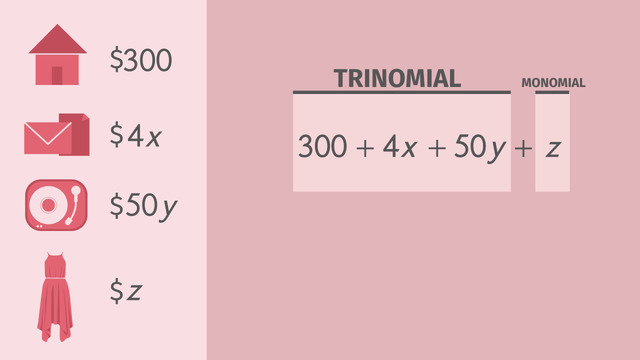
Introduction to Polynomials – Naming Polynomials by Number of Terms
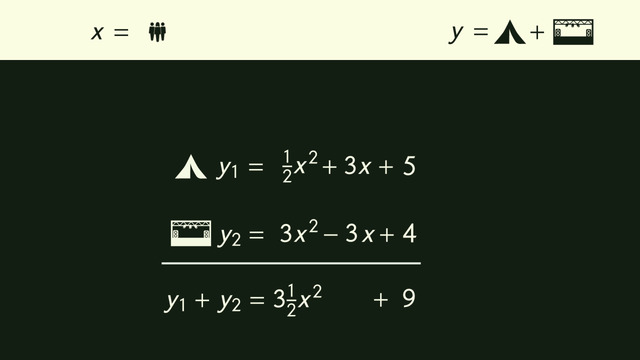
Adding Polynomials

Multiplying Polynomials
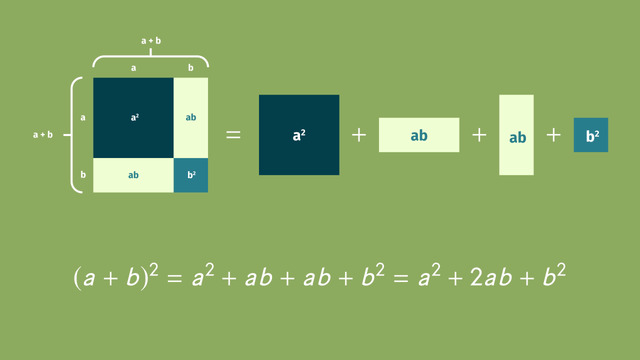
Multiplying Special Case Polynomials

Factoring out the GCF
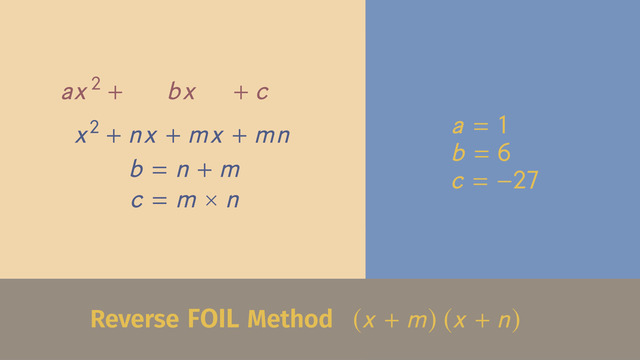
Factoring Trinomials with a = 1

Factoring Trinomials with a ≠ 1
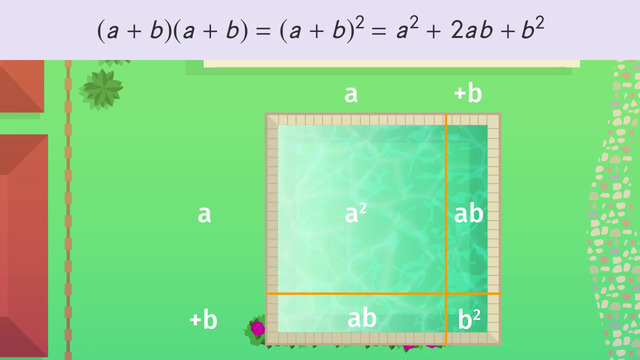
Factoring Special Case Polynomials
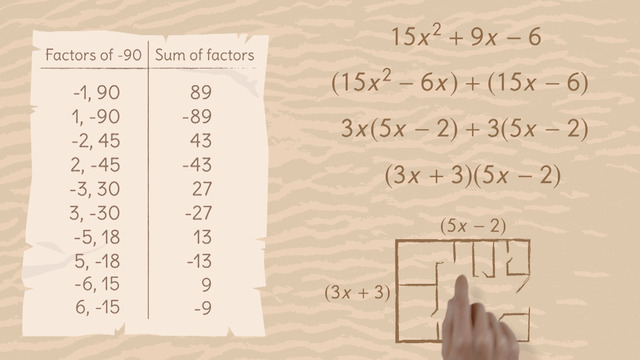
Factoring by Grouping
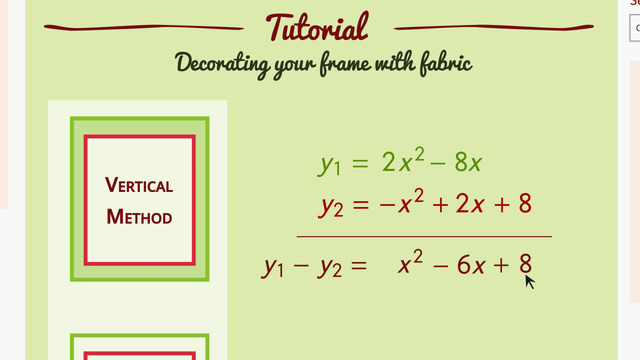
Subtracting Polynomials












"Origami, Karaoke, it's a long story, you get the picture" OMG XDDDD🤣